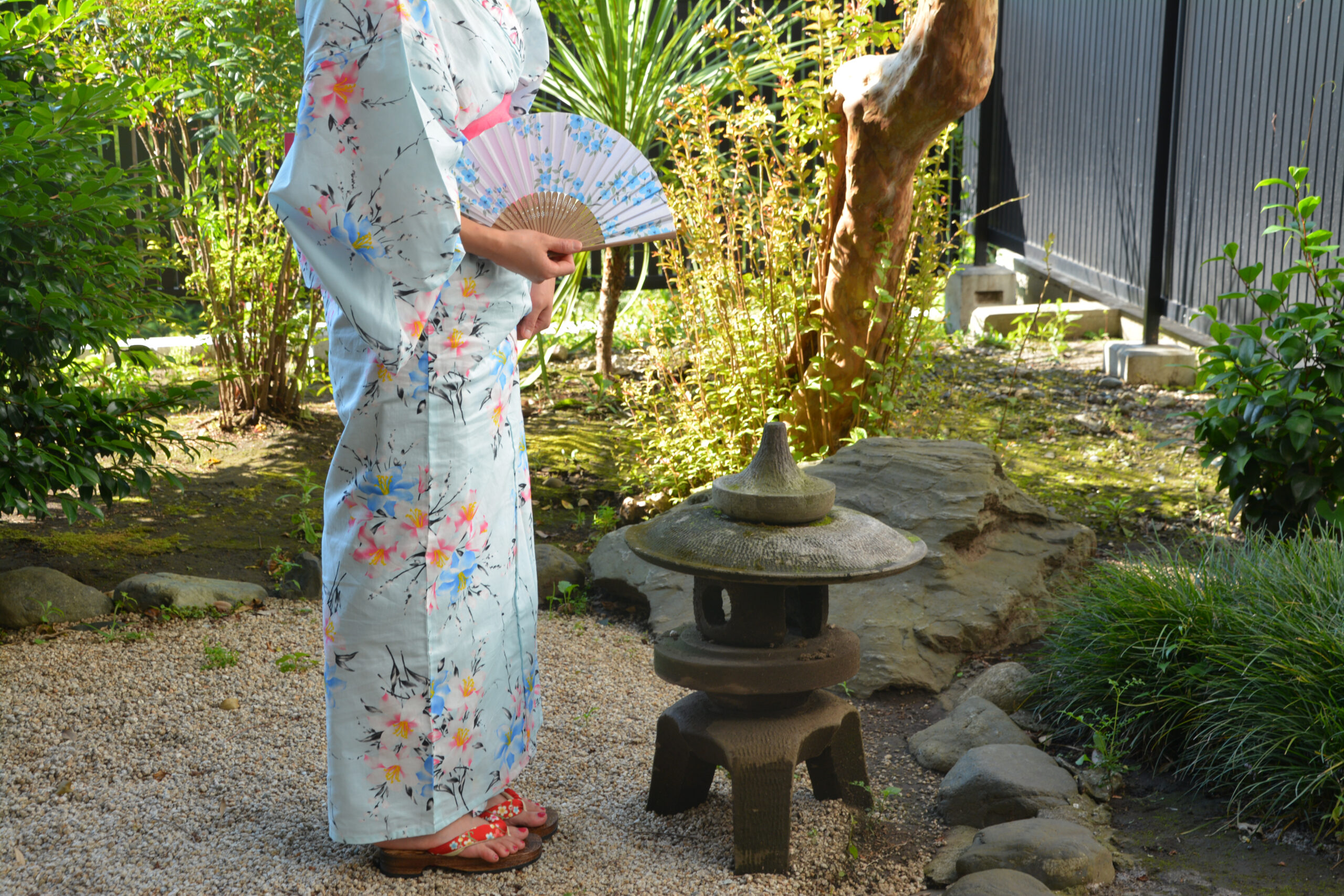“What’s the difference between yukata and kimono? Are there differences between men’s and women’s versions?”
“Are ryokans providing yukatas or kimonos?”
“I want to know the differences between yukata, kimono, and even hakama! How can I tell them apart?”
Indeed, when visiting Japan for the first time, understanding the distinction between yukata vs kimono can be quite confusing for international travelers. Many visitors find themselves wondering about these traditional garments as they plan their authentic Japanese experience. In short, yukatas and kimonos differ significantly in materials used, appropriate occasions for wearing, and overall visual appearance and construction. What you’ll typically encounter at a ryokan (traditional Japanese inn) is primarily the comfort-focused yukata, designed specifically for relaxation and ease of movement. In this comprehensive article, we’ll thoroughly break down the differences between yukata vs kimono from both male and female perspectives, along with detailed information about what to wear during your ryokan stay, approximate price ranges for purchasing or renting, and even the distinguishing characteristics of hakama – all essential knowledge to enhance your cultural immersion before your journey to Japan.
- What’s the Difference Between Yukata vs Kimono? Distinctive Features and Traditional Uses for Men and Women
- What Kind of Yukata Do You Wear at a Ryokan? Detailed Differences from Kimono and How to Maximize Your Authentic Stay Experience
- Understanding Ryokan Yukata as “Functional Loungewear”
- Comparative Analysis: Ryokan Yukata vs Traditional Kimono and Their Respective Price Ranges
- Essential Yukata Etiquette and Styling Guidelines for an Authentic Ryokan Experience
- 3 Highly Recommended Ryokans with Outstanding Services for International Visitors
- Comprehensive and Easy-to-Understand Explanation of Yukata vs Kimono vs Hakama Differences
- Foreign Visitor Friendly! Comprehensive Yukata vs Kimono Rental & Dressing Guide for International Travelers
- Conclusion | Enhance Your Japan Travel Experience Through Understanding the Yukata vs Kimono Distinction
What’s the Difference Between Yukata vs Kimono? Distinctive Features and Traditional Uses for Men and Women
While both yukata and kimono are treasured traditional Japanese garments with centuries of history behind them, they differ significantly in appearance, intended purpose, level of formality, and cultural context. Here, we’ll introduce the fundamental differences and gender-specific characteristics to help you understand these iconic pieces of Japanese cultural heritage.
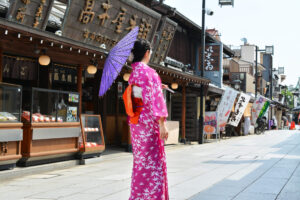
Significant Differences in Materials, Construction and Structure
- Yukata: Crafted primarily from lightweight, breathable natural materials such as cotton or hemp, featuring no lining and a simple single-layer construction that prioritizes comfort. These garments showcase a straightforward, practical design that helps keep the wearer cool in warm weather and are commonly worn at summer festivals, fireworks displays, and hot spring resorts throughout Japan. The simplicity of the yukata makes it much easier to put on without assistance compared to its more formal counterpart.
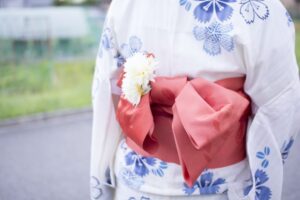
- Kimono: Meticulously created from a variety of premium materials including luxurious silk, fine polyester blends, and other traditional textiles. Most formal kimonos feature an “awase” (lined) construction and come in numerous specialized varieties depending on the season, specific occasion, and the wearer’s social status or role in the event. The craftsmanship involved in creating a high-quality kimono often requires specialized artisans who have dedicated their lives to perfecting traditional techniques passed down through generations.
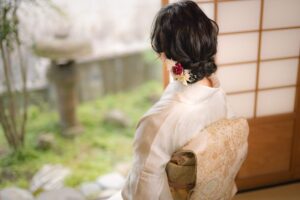
Seasonal Appropriateness and Occasions for Wearing
| Type | Appropriate Season | Primary Occasions for Wearing |
|---|---|---|
| Yukata | Summer months only | Evening fireworks festivals, local community celebrations, casual shrine visits, relaxing at ryokans and onsen resorts |
| Kimono | Year-round with seasonal variations | Formal weddings, elaborate tea ceremonies, New Year’s shrine visits, coming-of-age ceremonies, cultural performances, and other significant life events |
Yukata vs Kimono: Detailed Men’s Edition
- Yukata for Men: Typically designed in cool, refreshing color palettes featuring subdued blues, grays, and earth tones with subtle geometric patterns or traditional motifs. Men’s yukatas are paired with narrower, more functional obi belts that prioritize comfort. These garments project a casual, relaxed appearance perfect for summer evening strolls or enjoying festival food and games. The overall silhouette is straighter and less decorative than women’s versions, emphasizing practicality and understated elegance.
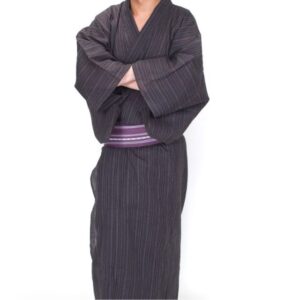
- Kimono for Men: Can be expertly paired with a formal haori (traditional jacket) and hakama (pleated trousers) to create an ensemble appropriate for highly formal occasions. The materials tend to be heavier and of higher quality, often featuring subtle yet sophisticated patterns that convey social status and attention to detail. These outfits are commonly worn for significant life events such as coming-of-age ceremonies, traditional weddings, and formal cultural performances where adherence to tradition is particularly important.
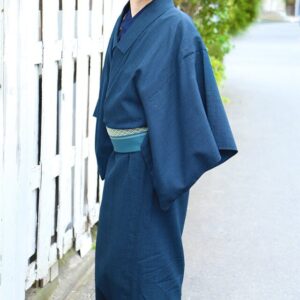
Yukata vs Kimono: Comprehensive Women’s Edition
- Yukata for Women: Distinguished by vibrant, eye-catching patterns featuring seasonal motifs like morning glories, fireworks, or goldfish, and adorned with creatively tied colorful obi belts that showcase personal style. Women’s yukatas offer excellent opportunities for personalization through carefully selected hair accessories, decorative obi ties, and complementary bags or fans. The overall aesthetic tends to be youthful, playful, and perfect for summer photo opportunities at festivals or scenic locations. Modern designs often incorporate contemporary color schemes and patterns while maintaining traditional silhouettes.
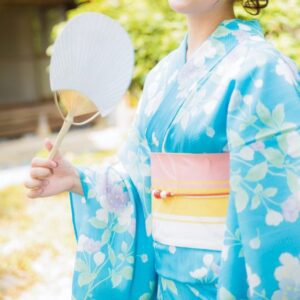
- Kimono for Women: Meticulously categorized into various types based on formality level, age appropriateness, and specific occasions, such as the long-sleeved furisode for unmarried women, elegant homongi for formal social events, and versatile tsukesage for semi-formal gatherings. Women’s kimonos feature complex layering, precisely measured proportions, and elaborate obi arrangements that often require professional assistance to achieve the correct look. The patterns and colors follow strict traditional guidelines that communicate information about the wearer’s age, marital status, and the formality of the occasion being attended.

What Kind of Yukata Do You Wear at a Ryokan? Detailed Differences from Kimono and How to Maximize Your Authentic Stay Experience
When staying at a traditional Japanese ryokan, you’ll almost invariably find yukatas thoughtfully provided in your room for your comfort and enjoyment. Let’s examine in detail the specific characteristics of ryokan yukatas, proper wearing techniques, and their significant differences from formal kimonos to enhance your cultural experience.
Understanding Ryokan Yukata as “Functional Loungewear”
The yukatas supplied at ryokans serve as sophisticated indoor wear specifically designed for guests to relax in comfortable yet culturally appropriate attire. Unlike ceremonial garments, these practical yukatas are typically lightweight, easy to don without assistance, and exceptionally comfortable, making them perfect for wearing after emerging from a rejuvenating hot spring bath. Many ryokans select yukata designs that complement their aesthetic theme or reflect local traditions, adding another layer of authenticity to your stay experience.
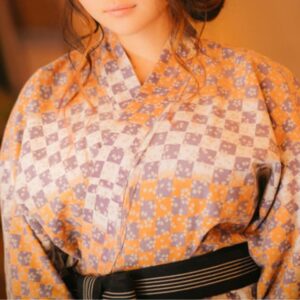
Comparative Analysis: Ryokan Yukata vs Traditional Kimono and Their Respective Price Ranges
- Ryokan Yukata: Conveniently included in your accommodation fee as a standard amenity and completely free to use throughout your stay. These are designed for practical comfort rather than ceremonial purposes, though they still adhere to traditional styling. Some premium ryokans may offer seasonal yukata variations or the opportunity to select from several design options to suit your personal taste.
- Kimono (Rental or Purchase): Rental prices vary significantly by type, quality, and location, typically ranging from ¥3,000 for basic options to upwards of ¥10,000 for premium designs with professional dressing assistance and accessories. Purchasing a high-quality kimono represents a substantial investment, with prices starting at ¥30,000 for simpler versions and reaching ¥300,000 or more for hand-crafted silk masterpieces, reflecting the extraordinary craftsmanship involved in their creation.
Essential Yukata Etiquette and Styling Guidelines for an Authentic Ryokan Experience
- The yukata must always be wrapped left side over right (the right side over left arrangement is strictly reserved for dressing the deceased in Japanese funeral traditions).
- Men typically tie their obi at natural waist height creating a straight silhouette, while women achieve a more traditional and flattering look by positioning the obi slightly higher, just below the bust line.
- You are generally encouraged to wear your yukata throughout all areas of the ryokan, including dining spaces, communal lounges, and garden areas, which contributes significantly to the immersive traditional experience.
- Some ryokans provide outer jackets called “tanzen” or “hanten” to wear over your yukata during cooler weather, allowing you to comfortably explore outdoor areas or visit nearby attractions while maintaining the traditional aesthetic.
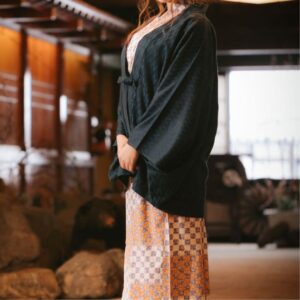
3 Highly Recommended Ryokans with Outstanding Services for International Visitors
| Facility Name | Detailed Location | Exceptional Features for Foreign Guests | Information Source |
|---|---|---|---|
| Hakone Kowakien Ten-yu | Hakone, Kanagawa Prefecture | Bilingual staff proficient in English, educational hot spring cultural sessions, private onsen options, and western bedding alternatives | HP |
| Tokura Kamiyamada Onsen Kamesei Ryokan | Chikuma City, Nagano Prefecture | Complete English-language website and materials, personalized service by English-speaking foreign-born proprietor who understands cultural questions, authentic local experiences with translation support | HP |
| Shima Onsen Kashiwaya Ryokan | Nakanojo, Gunma Prefecture | English-speaking staff, traditional Japanese-style rooms featuring private open-air therapeutic mineral baths, dietary accommodation for international guests, and guided local experiences | HP |
Comprehensive and Easy-to-Understand Explanation of Yukata vs Kimono vs Hakama Differences
Along with yukata and kimono, the “hakama” represents another significant category of traditional Japanese garment with its own unique characteristics and cultural context. Here’s a thorough breakdown of the distinctive differences between all three traditional garments to enhance your understanding of Japanese clothing traditions.
Distinctive Visual Characteristics and Structural Elements
- Yukata: A practical, casual single-piece summer garment with straight lines and minimal construction requirements. The fabric typically features prints rather than woven patterns, making it more affordable and accessible for everyday enjoyment. The simplicity of the yukata reflects its historical development as a practical garment for use after bathing, with the word “yukata” literally translating to “bathing clothes.”
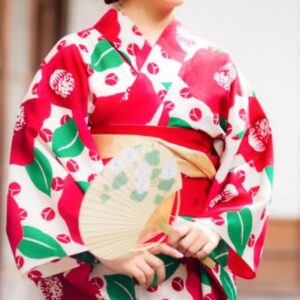
- Kimono: A meticulously crafted formal outfit consisting of multiple precisely arranged layers including specialized undergarments, the juban (under-kimono), the outer kimono itself, and an elaborately tied obi which can require several additional accessory pieces to achieve the correct formal appearance. The materials, patterns, and colors of a kimono communicate subtle messages about the wearer’s social status, the season, and the nature of the event being attended.
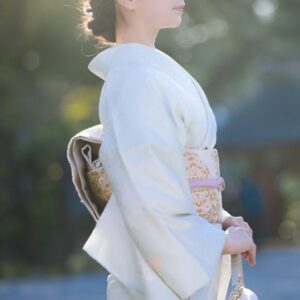
- Hakama: A distinctive pleated, skirt-like or trouser-like garment traditionally worn over a kimono, featuring seven deep pleats (five in front, two in back) that symbolize the seven virtues of bushido (the samurai code). Originally worn exclusively by men of the samurai class, hakama have evolved to become important ceremonial garments for both genders on specific formal occasions, with variations in design and wearing style according to gender and purpose.
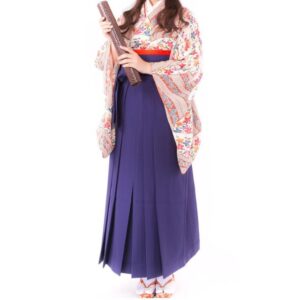
Detailed Differences in TPO (Time, Place, Occasion) and Formality Levels
| Garment | Comprehensive Formality Assessment | Appropriate Occasions and Cultural Context |
|---|---|---|
| Yukata | Casual everyday traditional wear | Summer evening festivals, neighborhood fireworks displays, relaxing at hot springs and ryokans, informal shrine visits, and casual summer gatherings |
| Kimono | Formal attire with multiple levels of formality depending on specific type | Elaborate wedding ceremonies, formal tea ceremonies, significant New Year celebrations, prestigious cultural performances, gallery openings, and formal diplomatic functions |
| Hakama | Ceremonial garment with historical significance | University graduation ceremonies (especially for women), traditional martial arts practice, Shinto shrine maiden duties, formal archery competitions, and certain traditional musical performances |
Detailed Selection Guide for Specific Cultural Events and Seasonal Occasions
- Summertime Fireworks Festival → Yukata is ideal, preferably in a colorful pattern with seasonal motifs such as flowing water, morning glories, or goldfish that capture the essence of Japanese summer
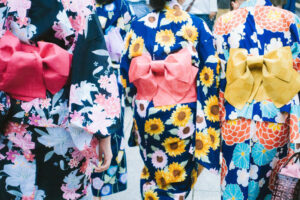
- New Year’s Shrine Visit → Casual kimono such as komon or semi-formal iromuji kimono, potentially with a haori jacket for warmth during the winter season
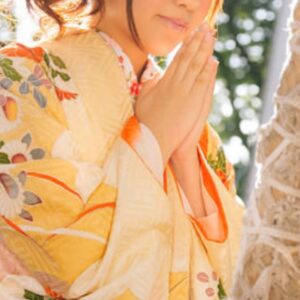
- Traditional Tea Ceremony → Formal kimono appropriate to the season, typically in subdued colors with appropriate seasonal motifs that won’t distract from the ceremony itself
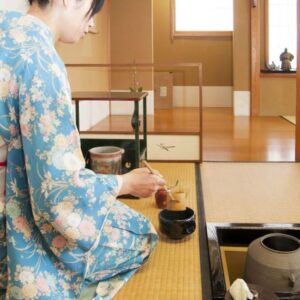
- University Graduation Ceremony → Hakama (especially for women), traditionally in black, navy, or maroon, paired with a complementary kimono top that adheres to institutional traditions

- Cherry Blossom Viewing Party → Casual kimono or yukata (depending on weather) featuring spring motifs that harmonize with the seasonal celebration
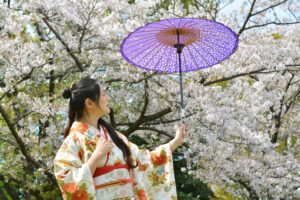
Foreign Visitor Friendly! Comprehensive Yukata vs Kimono Rental & Dressing Guide for International Travelers
Don’t worry if you’re experiencing these traditional garments for the first time! Throughout Japan, particularly in tourist destinations, you’ll find numerous specialized kimono and yukata rental establishments that specifically cater to international visitors with multilingual staff, clear English-language instructions, and culturally sensitive assistance to ensure an authentic and respectful experience.
3 Highly-Rated Rental Shops with Excellent English-Language Support
| Shop Name | Precise Location | Outstanding Features for International Guests | Official Online Presence |
|---|---|---|---|
| Yumeyakata | Shimogyo-ku, Kyoto (near Shijo Kawaramachi) | Comprehensive English & Chinese language support, specialized photography packages including professional shoots at scenic locations, extended wearing plans available, and inclusive size range accommodating international body types | HP |
| VASARA Asakusa Main Store | Taito-ku, Tokyo (5-minute walk from Asakusa Station) | Multiple convenient locations nationwide, exceptional multilingual support in English, Chinese, and Korean, wide selection of seasonal designs, premium hair styling services, and simplified dressing process designed specifically for first-time wearers | HP |
| Kyoaruki Gion Store | Higashiyama-ku, Kyoto (walking distance to Kiyomizu Temple) | Strategically located near major sightseeing attractions, impressive collection of over 2,000 different styles and sizes, specialized kimono plans for couples and groups, and professional photography services with scenic backdrop options | HP |
Detailed Step-by-Step Rental Process for International Visitors
- Make a convenient online reservation in advance through English-language booking platforms (highly recommended during peak tourist seasons to secure your preferred style and time slot)
- Arrive at the shop at your appointed time and browse their extensive collection to choose your perfect kimono or yukata design with staff assistance for selecting culturally appropriate patterns
- Experience professional dressing services and optional hair styling to complete your authentic look (staff will ensure proper fit and comfort while explaining traditional wearing practices)
- Embark on your sightseeing adventures or scheduled photo shoots while wearing your traditional garment (many shops provide useful walking maps highlighting photogenic locations nearby)
- Return your rented items either later the same day or the following day according to your rental agreement (some shops offer hotel pick-up services for added convenience)
Important Practical Considerations and Cultural Tips
- Make reservations well in advance to ensure availability of your preferred size and style, particularly during high tourist seasons and major festivals
- Remember that the left side of the garment should always overlap the right (right over left is strictly for funeral attire)
- Confirm whether your chosen rental shop provides practical amenities such as secure luggage storage facilities and rain protection options in case of inclement weather
- Consider your planned activities when selecting footwear and accessories – traditional options like geta (wooden sandals) look authentic but may become uncomfortable during extended walking tours
- Ask staff for guidance on appropriate behavior while wearing traditional garments, particularly when visiting religious sites or participating in cultural activities
Conclusion | Enhance Your Japan Travel Experience Through Understanding the Yukata vs Kimono Distinction
Developing a thorough understanding of the differences between yukata vs kimono will significantly enrich your Japanese travel experience, allowing you to appreciate the cultural nuances and historical significance behind these traditional garments. By selecting appropriate attire based on specific occasions and cultural contexts, you’ll gain a deeper connection to Japan’s seasonal traditions and rich cultural heritage. With many accommodations and specialized shops now offering excellent English-language support and culturally sensitive guidance, even first-time visitors can confidently embrace these authentic experiences without concern.
The photographs capturing your time in Japan while wearing these traditional garments will undoubtedly become treasured mementos of your cultural journey. The unique experience of walking through historic districts, visiting ancient temples, or simply enjoying the peaceful ambiance of a traditional ryokan while dressed in an authentic yukata or kimono creates memories that will last a lifetime. We encourage you to step outside your comfort zone and fully immerse yourself in this beautiful aspect of Japanese culture by walking the atmospheric streets and scenic pathways of Japan adorned in your carefully selected traditional attire!
Related Pages:Private Onsen Near Me: Tokyo
Related Pages:Onsen Near Kyoto
